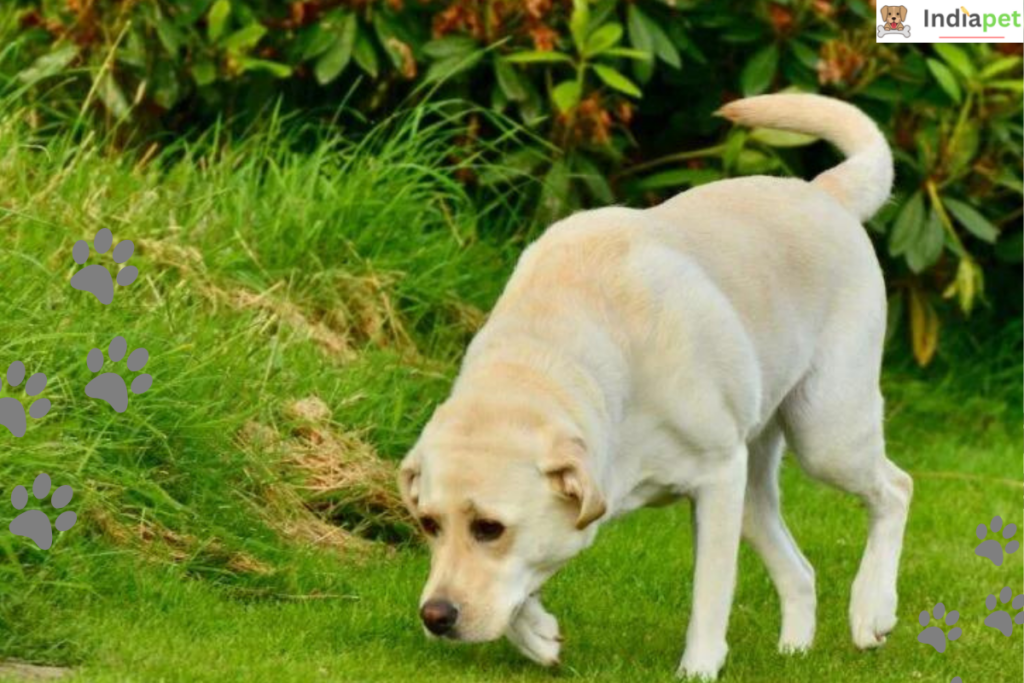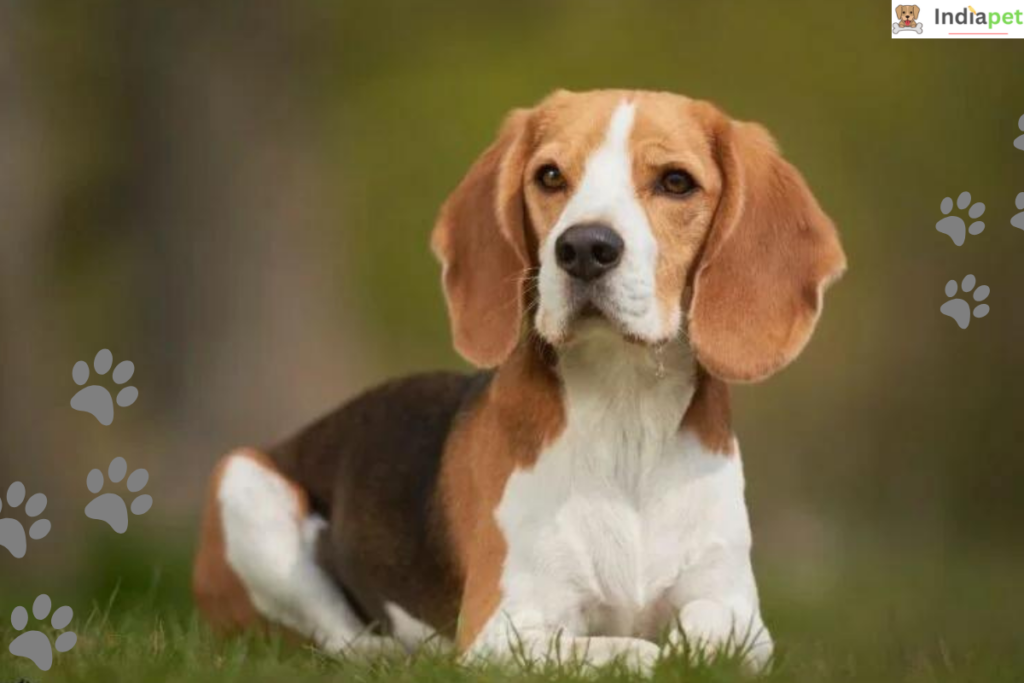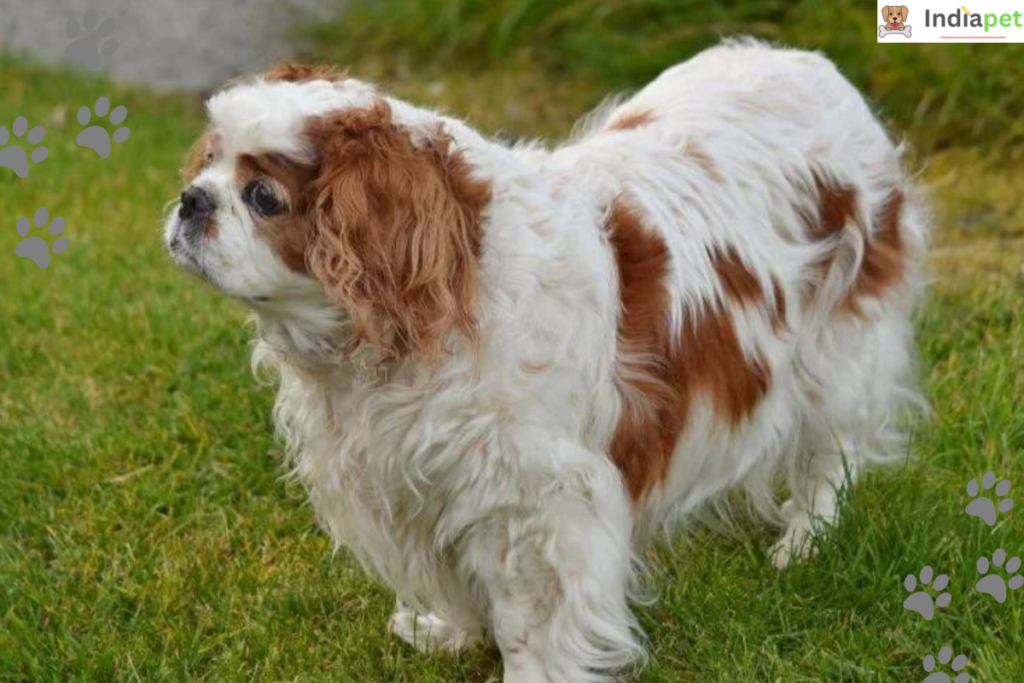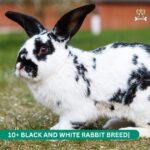10 Dog Breeds That Are Surprisingly Good With Cats – When welcoming a new dog into a home with cats, many pet owners worry about potential conflicts. However, several dog breeds are known for their friendly disposition and ability to coexist peacefully with feline companions. Whether you have a playful kitten or a seasoned cat, certain dog breeds can adapt and thrive in a multi-pet household. In this blog, we’ll explore ten dog breeds that are surprisingly good with cats, highlighting their unique traits and why they make excellent companions for both dogs and cats alike. If you’re looking to create a harmonious living environment for all your furry friends, read on to discover the best canine candidates for your family.
__________________________________________________________________
10 Dog Breeds That Are Surprisingly Good With Cats
1. Golden Retriever
Size:
- Height: 21-24 inches
- Weight: 55-75 lbs
- Color: Golden, cream
Temperament:
Golden Retrievers are known for their friendly and gentle demeanor. They are sociable and typically get along well with other pets, including cats. Their affectionate nature makes them great family companions.
Trainability:
This breed is highly trainable due to its intelligence and eagerness to please. They respond well to positive reinforcement techniques, making training enjoyable for both the dog and owner. Early socialization is essential to ensure they develop into well-rounded adults.
Nature:
Golden Retrievers are affectionate and loyal, often forming strong bonds with their families. They are playful and enjoy being active, which helps them stay engaged and happy. Their gentle disposition makes them great with children and other animals.
Protective:
While generally friendly, Golden Retrievers can be protective of their home and loved ones. They will alert their family to any potential threats without being aggressive. Their natural alertness makes them good watchdogs.
Nutrition:
A balanced diet rich in protein and omega fatty acids is crucial for Golden Retrievers to maintain their health. High-quality kibble tailored to their needs can help prevent obesity, a common concern in the breed. Regular monitoring of their weight is essential to avoid health issues.
Ability:
Golden Retrievers are intelligent and excel in various roles, including service and therapy dogs. Their ability to learn commands quickly makes them suitable for obedience competitions. They thrive on mental stimulation, which keeps them engaged.
Physical Fitness:
This breed requires at least one hour of exercise daily to stay healthy and happy. Activities like fetching, swimming, and agility training are ideal for their energy levels. Regular physical activity helps prevent obesity and behavioral problems.

2. Labrador Retriever
Size:
- Height: 21.5-24.5 inches
- Weight: 55-80 lbs
- Color: Black, yellow, chocolate
Temperament:
Labrador Retrievers are known for their friendly and outgoing nature. They are generally good with children and other pets, making them great family dogs. Their gentle demeanor allows them to coexist well with cats.
Trainability:
Labradors are highly trainable due to their intelligence and willingness to work with humans. They excel in obedience training and can perform various tasks, including service work. Consistent training and socialization are essential for their development.
Nature:
Labradors are playful and sociable, enjoying interaction with people and other animals. Their affectionate nature makes them great companions for families. They thrive on companionship and can suffer from separation anxiety if left alone too long.
Protective:
While primarily friendly, Labradors are alert and can serve as effective watchdogs. They will bark to alert their family about unfamiliar situations. Their protective instincts are balanced with their overall friendly disposition.
Nutrition:
Labradors require a balanced diet that includes high-quality protein to support their energy levels. Portion control is crucial to prevent obesity, a common issue with the breed. Regular veterinary check-ups help monitor their dietary needs.
Ability:
Labradors are known for their intelligence and versatility, excelling in roles like therapy, search-and-rescue, and hunting. Their eagerness to learn makes them suitable for various activities, including agility and obedience. Mental stimulation is key to keeping them engaged.
Physical Fitness:
This breed needs at least one hour of exercise daily to maintain their health. They enjoy a range of activities, from running to swimming and retrieving. Regular physical activity is essential to prevent weight gain and behavioral issues.
3. Beagle
Size:
- Height: 13-15 inches
- Weight: 20-30 lbs
- Color: Tri-color, lemon, red
Temperament:
Beagles are known for their curious and friendly nature. They are generally sociable and enjoy being around people and other pets, including cats. Their playful demeanor makes them great companions for families.
Trainability:
Beagles can be stubborn, but with consistent training, they can learn various commands. Positive reinforcement techniques work best for this breed, keeping training enjoyable. Regular mental stimulation is essential to prevent boredom.
Nature:
This breed is affectionate and enjoys companionship, often forming strong bonds with their families. Beagles are energetic and playful, thriving on interactive activities. Their friendly disposition helps them get along well with cats.
Protective:
Beagles are alert and will bark to notify their owners of unfamiliar situations. While they may not be aggressive, their natural instincts make them good watchdogs. Their protective nature is balanced with their friendly demeanor.
Nutrition:
Beagles require a high-quality dog food that meets their nutritional needs while controlling calorie intake. Due to their tendency to gain weight, portion control is essential. Regular vet check-ups help monitor their dietary requirements.
Ability:
Beagles are clever and good problem solvers, making them great companions. They have strong scent-tracking abilities and often excel in scent work. Regular training and mental challenges help keep them engaged.
Physical Fitness:
This breed needs at least 30-60 minutes of exercise daily to maintain their health. Beagles thrive on activities like walks, playtime, and scent games, catering to their hunting instincts. Regular exercise helps prevent behavioral issues.

4. Basset Hound
Size:
- Height: 14-15 inches
- Weight: 40-65 lbs
- Color: Tri-color, red and white
Temperament:
Basset Hounds are known for their gentle and laid-back temperament. They are typically friendly and get along well with children and other pets. Their calm nature makes them great companions for families with cats.
Trainability:
Basset Hounds can be independent and stubborn, but they are also clever and can learn commands with patience. Consistent training and early socialization help them develop well-rounded personalities. Positive reinforcement methods are most effective for this breed.
Nature:
This breed is affectionate and often forms strong bonds with their families. Basset Hounds are laid-back, enjoying a relaxed lifestyle but still require regular interaction. Their friendly disposition allows them to coexist peacefully with other pets.
Protective:
Basset Hounds are alert and will bark to notify their families of unfamiliar people or situations. While they may not be aggressive, their natural instincts make them good watchdogs. Their protective nature is generally non-threatening.
Nutrition:
A balanced diet is essential for Basset Hounds to maintain a healthy weight and overall health. Due to their tendency to gain weight, it’s important to monitor their food intake. High-quality dog food tailored to their needs helps prevent obesity.
Ability:
Basset Hounds are independent thinkers and have strong scent-tracking abilities, often excelling in tracking tasks. They can be clever, but their stubbornness may require patience during training. Regular mental stimulation is crucial for their development.
Physical Fitness:
Basset Hounds require moderate exercise, typically around 30 minutes a day. Their exercise should include leisurely walks and gentle playtime to accommodate their laid-back nature. Regular activity helps prevent obesity and maintains joint health.
Also read : What is the Nicest dog breed List [Update 2024]
5. Cavalier King Charles Spaniel
Size:
- Height: 12-13 inches
- Weight: 13-18 lbs
- Color: Blenheim, tricolor, ruby, black and tan
Temperament:
Cavalier King Charles Spaniels are known for their affectionate and gentle demeanor. They are sociable and generally get along well with children and other pets, including cats. Their loving nature makes them great companions for families.
Trainability:
This breed is highly trainable and responds well to positive reinforcement methods. Their eagerness to learn allows them to excel in obedience training and various activities. Consistent training and socialization are essential for their development.
Nature:
Cavaliers are friendly and enjoy companionship, often forming strong bonds with their families. They are playful and thrive on interactive activities, which helps keep them engaged. Their affectionate nature makes them great family pets.
Protective:
While generally friendly, Cavalier King Charles Spaniels are alert and will bark to notify their owners of strangers. Their protective instincts are balanced with their overall affectionate demeanor. They can serve as good watchdogs without being aggressive.
Nutrition:
Cavaliers thrive on a high-quality, balanced diet that supports their small size and energy levels. They may require low-calorie options to prevent obesity, which is common in the breed. Regular monitoring of their diet is essential for maintaining a healthy weight.
Ability:
This breed is intelligent and eager to learn, making them suitable for various activities, including agility and obedience. Their ability to adapt to different environments helps them excel in diverse situations. Mental stimulation is crucial for keeping them engaged.
Physical Fitness:
Cavalier King Charles Spaniels require about 30 minutes of exercise daily to stay healthy and happy. They enjoy playful activities such as fetch or gentle walks, which also promote bonding time with their owners. Regular physical activity helps prevent obesity and keeps them mentally stimulated.
Also read : Quality Dog Breed with Most Attacks [Update 2024]

6. Poodle
Size:
- Height: 10-24 inches (varies by type)
- Weight: 4-70 lbs (varies by type)
- Color: Various, including black, white, apricot
Temperament:
Poodles are known for their intelligence and friendly nature. They are typically sociable and enjoy interacting with people and other pets, including cats. Their playful demeanor makes them great companions for families.
Trainability:
This breed is highly trainable due to its intelligence and eagerness to learn. They excel in obedience training and can perform various tasks, including service work. Mental stimulation is essential for keeping them engaged and happy.
Nature:
Poodles are adaptable and affectionate, often forming strong bonds with their families. They are playful and enjoy social interactions, which helps them thrive in family environments. Their gentle disposition allows them to coexist well with other pets.
Protective:
Poodles can be good watchdogs due to their alertness and intelligence. They will bark to notify their owners of any unfamiliar situations or potential threats. Their protective instincts are typically balanced with their friendly demeanor.
Nutrition:
Poodles require a high-quality diet that meets their specific nutritional needs based on their size. Regular monitoring for food allergies is essential, as some poodles may be sensitive to certain ingredients. A balanced diet contributes to their overall health and coat condition.
Ability:
Poodles are exceptionally intelligent and excel in various roles, including service and therapy dogs. Their versatility allows them to perform well in obedience competitions and as family pets. Regular mental challenges help keep them engaged and happy.
Physical Fitness:
Poodles need about 30-60 minutes of exercise daily, depending on their size and energy levels. Activities like running, swimming, and agility courses are great for keeping them fit and mentally stimulated. Regular exercise is vital for their overall health and happiness.
7. Shetland Sheepdog
Size:
- Height: 13-16 inches
- Weight: 20-40 lbs
- Color: Sable, black, blue merle
Temperament:
Shetland Sheepdogs are intelligent and gentle, known for their affectionate nature. They are typically friendly and sociable, getting along well with children and other pets. Their loyal demeanor makes them great companions for families.
Trainability:
This breed is highly trainable and responds well to positive reinforcement methods. Their eagerness to learn makes them excellent candidates for obedience training and competitions. Consistent training and socialization help them develop strong social skills.
Nature:
Shetland Sheepdogs are devoted and often form strong bonds with their families. They are playful and enjoy interactive activities, which keeps them engaged and happy. Their friendly nature allows them to coexist peacefully with cats and other pets.
Protective:
While primarily friendly, Shetland Sheepdogs are alert and will bark to notify their owners of potential threats. Their protective instincts make them good watchdogs, although they are not typically aggressive. Their alertness is balanced with their affectionate demeanor.
Nutrition:
Shetland Sheepdogs require a high-quality diet that provides balanced nutrients suitable for their energy levels. Regular vet check-ups help determine the best diet to maintain their health. Proper nutrition is key to preventing obesity and supporting their active lifestyle.
Ability:
This breed is intelligent and responsive to training, making them excellent candidates for obedience competitions and working roles. Their eagerness to learn allows them to adapt quickly to new commands and tasks. Regular mental stimulation helps keep their minds sharp.
Physical Fitness:
Shetland Sheepdogs need at least one hour of exercise daily to stay healthy and active. They thrive on activities like agility training, herding, and long walks, which cater to their energetic nature. Regular physical activity helps prevent behavioral issues linked to boredom.
Also read : Dog Breed that Starts with S: History & Facts [Update 2025]
8. Irish Setter
Size:
- Height: 21-28 inches
- Weight: 45-70 lbs
- Color: Mahogany, chestnut
Temperament:
Irish Setters are energetic and friendly, known for their playful nature. They are generally good with children and other pets, making them great family dogs. Their sociable demeanor allows them to coexist well with cats.
Trainability:
This breed is intelligent and eager to learn, excelling in training and various activities. They require consistent training and positive reinforcement to reach their full potential. Early socialization is essential for developing a well-rounded adult dog.
Nature:
Irish Setters are social and loving, enjoying interaction with people and other animals. They thrive on companionship and can suffer from separation anxiety if left alone too long. Their playful nature makes them great companions for active families.
Protective:
While generally friendly, Irish Setters are alert and will notify their owners of unfamiliar situations. Their protective instincts are balanced with their overall sociable demeanor. They can serve as good watchdogs without being overly aggressive.
Nutrition:
Irish Setters benefit from a high-quality, protein-rich diet that supports their energetic lifestyle. Regular portion control is essential to prevent obesity, which can lead to health issues. Monitoring their diet can help maintain a healthy weight throughout their lives.
Ability:
This breed is known for its intelligence and versatility, excelling in roles like hunting and therapy. Their eagerness to learn makes them suitable for various activities, including agility and obedience. Mental stimulation is key to keeping them engaged.
Physical Fitness:
Irish Setters require 1-2 hours of exercise daily to keep them physically and mentally stimulated. They enjoy activities such as running, playing fetch, and participating in dog sports. Regular exercise helps channel their energy positively and prevents behavioral issues.
9. Newfoundland
Size:
- Height: 26-28 inches
- Weight: 100-150 lbs
- Color: Black, brown, gray, Landseer
Temperament:
Newfoundlands are known for their gentle and sweet nature, often described as “gentle giants.” They are patient and calm, making them great companions for families, including those with cats. Their affectionate demeanor helps them form strong bonds with their loved ones.
Trainability:
This breed is intelligent and capable, often excelling in roles like water rescues due to their strong swimming abilities. While they respond well to kindness, they may require consistent training and socialization to develop good manners. Positive reinforcement techniques work best with their gentle nature.
Nature:
Newfoundlands are calm and friendly, enjoying companionship and interaction with their families. They are social dogs that thrive in family environments, often displaying great patience with children and other pets. Their affectionate nature allows them to coexist peacefully with cats.
Protective:
Newfoundlands are strong guardians and will protect their family without being aggressive. They are naturally protective of their loved ones and can serve as effective watchdogs. Their alertness helps them recognize potential threats while remaining calm.
Nutrition:
Newfoundlands require a high-quality, balanced diet that supports their large size and energy needs. Proper nutrition is crucial for maintaining their health and preventing obesity. Regular monitoring of their diet can help avoid weight-related issues.
Ability:
This breed is highly intelligent and capable, often excelling in water rescues and therapy work. Their strong instincts make them reliable companions in various situations. 10 Dog Breeds That Are Surprisingly Good With Cats Newfoundlands are known for their gentle temperament and ability to learn commands quickly.
Physical Fitness:
Newfoundlands need moderate exercise, typically around 30-60 minutes daily, to maintain their health. They enjoy swimming and light play, which are perfect for their natural instincts. Regular physical activity helps prevent obesity and promotes overall well-being.
10. American Eskimo Dog
Size:
- Height: 9-19 inches (varies by type)
- Weight: 6-35 lbs (varies by type)
- Color: White or white with cream
Temperament:
American Eskimo Dogs are known for their friendly and playful nature. They are typically sociable and enjoy interacting with people and other pets, including cats. Their affectionate demeanor makes them great family companions.
Trainability:
This breed is highly trainable and eager to learn, making them easy to train for various tasks. They excel in obedience and canine sports, showcasing their versatility. Regular mental stimulation is crucial for their well-being and happiness.
Nature:
American Eskimo Dogs are sociable and affectionate, often forming strong bonds with their families. They are playful and thrive on interactive activities, which keep them engaged. Their friendly disposition allows them to coexist peacefully with cats and other pets.
Protective:
American Eskimo Dogs are alert and will bark to notify their owners of unfamiliar situations. Their protective instincts make them good watchdogs, although they are not typically aggressive. Their alertness is balanced with their overall affectionate demeanor.
Nutrition:
American Eskimo Dogs thrive on high-quality dog food that meets their specific dietary needs. They may be sensitive to certain ingredients, so monitoring their diet is essential. A balanced diet contributes to their energy levels and coat health.
Ability:
This breed is highly intelligent and excels in various roles, including service and therapy dogs. Their eagerness to learn makes them suitable for various activities, including agility and obedience.10 Dog Breeds That Are Surprisingly Good With Cats Regular mental challenges help keep them engaged.
Physical Fitness:
American Eskimo Dogs require about 30-60 minutes of exercise daily to stay fit and healthy. They enjoy interactive play and activities that engage their minds and bodies. Regular physical activity helps prevent boredom and promotes a happy, well-adjusted pet.
__________________________________________________________________
Conclusion
10 Dog Breeds That Are Surprisingly Good With Cats – Choosing a dog that gets along with cats can be a challenge, but many breeds are naturally inclined to coexist peacefully with feline friends. Whether you’re looking for a friendly Golden Retriever or a gentle Newfoundland, these ten breeds can bring joy and harmony to your home. With the right training, socialization, and care, your dog can become a beloved companion to both you and your cat.
__________________________________________________________________
FAQs about 10 Dog Breeds That Are Surprisingly Good With Cats
1. Can any dog breed get along with cats?
While some breeds are more predisposed to being cat-friendly, individual temperament and early socialization play crucial roles in determining compatibility.
2. How can I help my dog get along with my cat?
Introducing them slowly and under supervision, using positive reinforcement, and providing separate spaces for both pets can help foster a peaceful coexistence.
3. What should I do if my dog shows aggression towards my cat?
If your dog exhibits aggressive behavior, consult a professional dog trainer or behaviorist to address the issue safely and effectively.
4. Are there specific training techniques that work best for integrating dogs and cats?
Positive reinforcement techniques, such as rewarding good behavior and encouraging calm interactions, are generally effective in helping dogs and cats coexist.
5. What if my dog and cat don’t get along despite my efforts?10 Dog Breeds That Are Surprisingly Good With Cats
Sometimes, despite best efforts, certain pets may not get along. In such cases, it’s important to prioritize the safety and well-being of both animals. Consulting a professional may provide additional strategies or solutions.
___________________________________________________________________



